HTZ: Pelješac Bridge Becoming New Tourist Attraction
ZAGREB, 26 July 2022 - Pelješac Bridge is already becoming a tourist attraction and is expected to further boost the demand for holiday destinations in Croatia's south, Croatian Tourist Board (HTZ) Director Kristjan Staničić told Hina ahead of the bridge's opening on Tuesday.
"The bridge will certainly be a new tourist attraction, both for boaters, for whom sailing under the bridge will be a special experience, and for travellers and tourists who will be able to enjoy the magnificent view of the bridge from surrounding vantage points and roads," Staničić said, adding that the HTZ would use the bridge in its promotional campaigns.
He said it was still early to speak about the direct impact of the bridge on tourist trends and destinations in Croatia's far south, but added that the bridge would certainly reduce the dependence of the local tourist industry on air traffic.
"Although the United Kingdom and the United States are among the most important markets for Dubrovnik-Neretva County, also important are the markets of Germany, Poland, France and Slovenia, as well as the domestic market, so it is expected that Pelješac Bridge will increase the demand from these markets and contribute to the image of Croatia of a well-positioned car destination," Staničić said.
He said that a Euronews crew had visited the bridge last week for a travel story. He noted that this leading European news channel was available to about 70 per cent of households or about 145 million people in Europe.
For more news about Croatia, click here.
Tourist Interest in Pelješac Increases Ahead of Bridge Completion
June 8, 2022 - Tourist interest in Pelješac is increasing and the peninsula is already recording good tourist results. The opening of the Pelješac bridge, which will bring Croatia's second-largest peninsula closer to the mainland, will shorten travel time. This will surely mean the arrival of even more guests.
Peljesac attracts more and more guests from all over the world, reports HRT News.
''We love Orebić! It is very nice here: the weather was good, the food was delicious, all over Pelješac. We are really enjoying it, and maybe we will be back in September''., says Mihael from Poland.
''We have been coming to Viganj since the '80s, for surfing, so we are actually at home here. We will stay for about 3 weeks.'', says Vladimir, a Croat from Germany.
''We travel along the entire Croatian coast, from Zadar to Dubrovnik, we stay in every place for 2-3 days. We decided to come here because we did not know this part of the coast.'', adds Pasqual from France.
Tourism seems to have returned to the "old normal". The numbers in the pre-season are getting closer to the record ones.
''At pre-season, the index is 200 percent better than last year: 52 thousand overnight stays and I can tell you that we achieved 90 percent of turnover compared to 2019. Now, most foreigners in the pre-season come from Germany, so we hope it will continue in the high season.'', said Mladen Đeldum, director of the Orebić Tourist Board.
For two years in a row, the best small hotel in Croatia is an eco-hotel. The first season with the Pelješac bridge will surely remain in good memory. The changes are already visible.
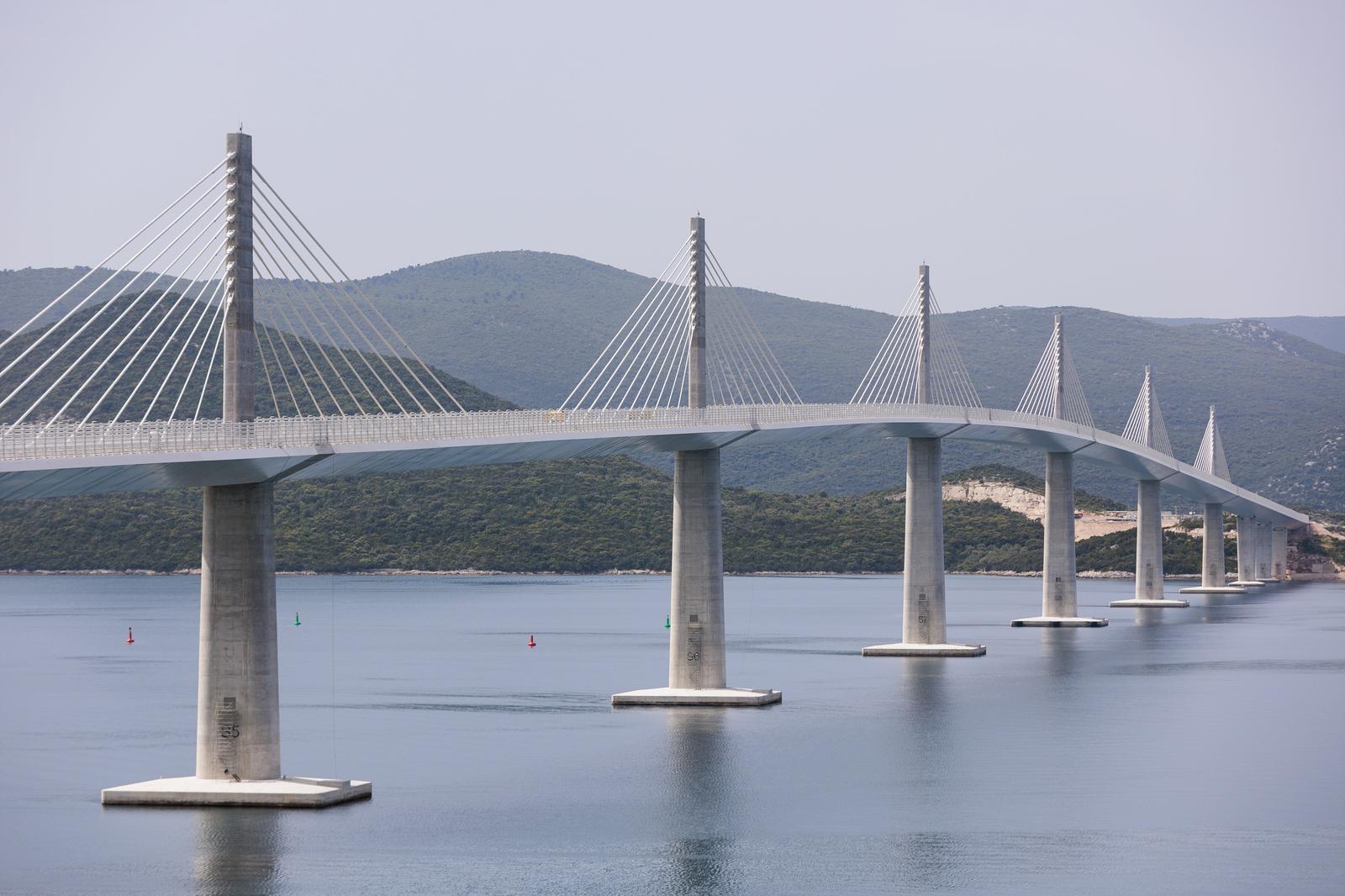
The Pelješac bridge. Image was taken on May 27th. (Photo: Miroslav Lelas/PIXSELL)
''This change has already begun even before the pandemic when houses on Peljesac began to be bought en masse. We are witnessing this because, as the hotel is open all year round, all those foreigners who come in the winter to look for a property stayed with us.'', says Sabina Mikulić, owner of the Adriatic Hotel.
The changes will be most noticeable in Ston, where they are afraid that, until the Ston bypass is completed, it will become a traffic bottleneck on the way to Dubrovnik.
The first cars over the Pelješac bridge should start transiting in the middle of summer. Hopefully, full of tourists eager for vacations.
The Pelješac bridge has been completed, and its commissioning requires the completion of at least some access roads.
''We are located in Zaradeže, a place where in a few months, cars that will first pass through the long tunnel Debeli Brijeg will connect to the road across Pelješac. As we can see, the road is paved at the moment, everything is ready for the fence, and everything should be completed by July 13, when the access roads, together with the Pelješac bridge, should pass a technical inspection.'', the central Dnevnik told HTV's Vicko Dragojević.
Ing. Davor Perić from Hrvatske ceste says that the works at the Zaradeža hub are the most active.
''In this part, from the Pelješac bridge to this place where we are now standing, at the Zaradeža junction, the works are currently the most active. More than 500 people have been hired and the contractor has invested great resources and efforts to reach the July 13th deadline.'', Perić said.
He points out that certain parts of the section are being worked on day and night.
''In some parts of the section, primarily in the longest tunnel on the access roads, the Debeli Brijeg tunnel, work is done 24 hours a day. There are also teams for the completion of construction works, as well as electricians. There is a big crowd on the route and the contractor is really making every effort to finish on time.'', he says.
''Following the Zaradeža junction, the first 10 kilometers of the Ston bypass are expected to be opened this summer, which is about half of the part of the project carried out by the Greek contractor, Avax, and we expect that part, those 10 kilometers, will be ready this summer together with the Pelješac Bridge and the access roads.'', Perić said.
Ston will become a traffic bottleneck on the way to Dubrovnik this summer until the Ston bypass is completed.
''The traffic will end at the Prapratno junction, where it will be directed to the town of Ston, and that will be the case until the complete completion of the project, until the connection to the highway. For that, the last section of 8 kilometers remained, which includes two tunnels and the Ston bridge, and we expect that to be completed by the end of the year.'', concluded Perić.
For more on travel in Croatia, follow TCN's dedicated page.
Pelješac Tradition Museum Opens Ahead of Tourist Season
April 16, 2022 - The Pelješac Tradition Museum exhibits a unique collection of amphorae, old tools, bread ovens, and 19th-century olive mills collected by the Mikulić family.
An impressive collection of amphorae more than two thousand years old, grinders, barrels, brandy cauldrons, old tools, fireplaces, bread ovens, paintings of the Virgin Mary, patron saint of vineyards, saddles, and a 19th-century olive oil mill of the famous Dubrovnik family Sorkočević - are just some of the exhibits in the unique collection that Mikulić family members have been collecting for years.

In order to tell a story about the tradition and beauty of life on Pelješac, they opened the "Pelješac Tradition Museum" as part of their famous boutique winery in the Postup wine-growing location of Mokalo. An experience for all the senses because the tour ends with a tasting of their top pošip and postup, among which Don Josip stands out.
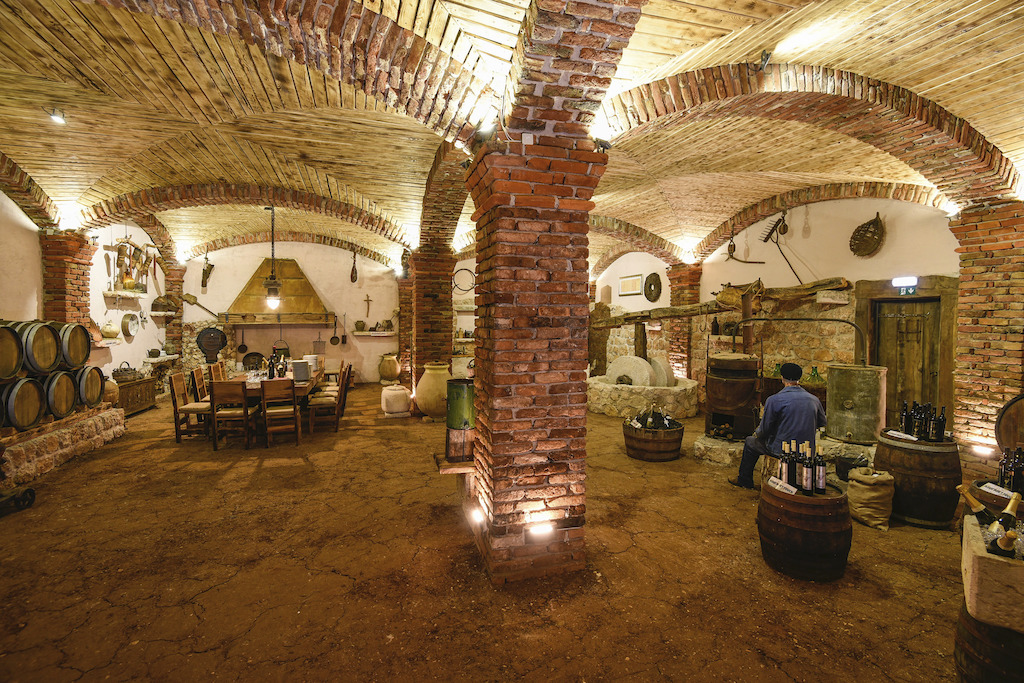
"Our son Antonio named our famous act as a sign of respect for his grandfather Josip, from whom he inherited his love for viticulture, winemaking, and olive production. We have been engaged in vine growing and winemaking for generations, as have many families on Pelješac. We dedicated this museum to them, the farmers of Pelješac. Our tour symbolically begins in front of a picture of grandfather Josip and grandson Antonio; the focus is on wine transported from Pelješac in amphorae in antiquity and until the middle of the last century in bellows on loads and mules in a caravan. We have shown all this in our Museum, and in the end, the impressions are best gathered with wine," points out Igor Mikulić, who realized his dream by opening the Pelješac Tradition Museum.

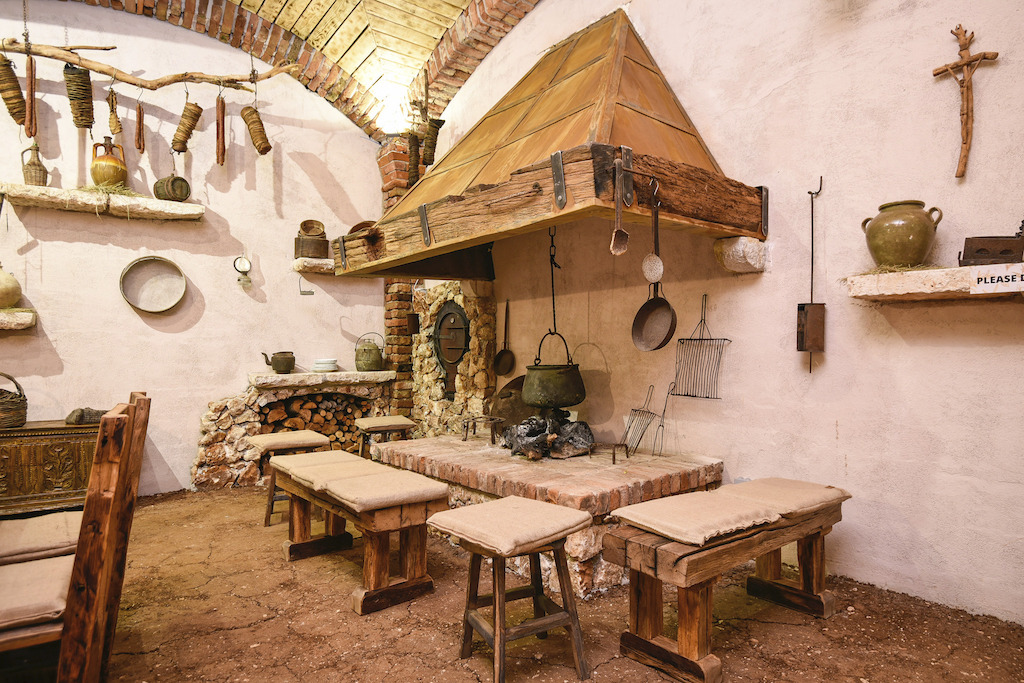
He has been creating this rich collection for years, although most of the exhibits have been very well known in tourist and wine circles for generations owned by families. His son Antonio, daughter Adriana, and wife Sabina are also involved in the business.
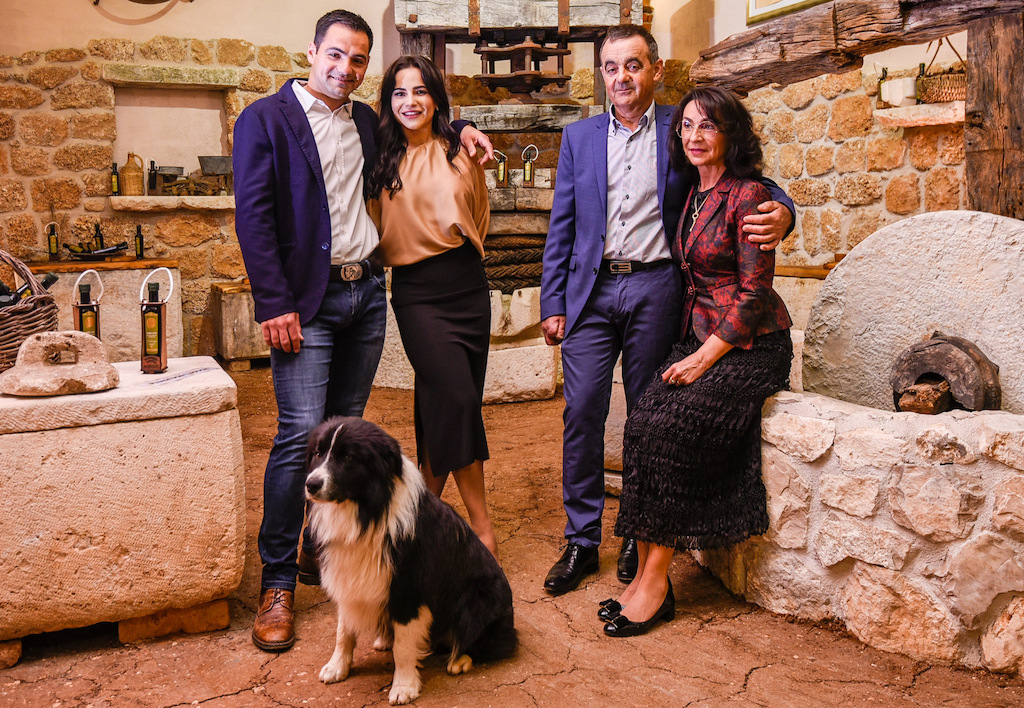
The new project opened before Easter, and they completed the rich offer ahead of the new tourist season. In addition to the unique Adriatic wine resort camp and glamping and the award-winning boutique winery in Mokalo, they own the luxury heritage hotel Adriatic with a beautiful la carte restaurant.
All photos by Boutique vinarija Mikulić
For more, check out our lifestyle section.
Take It Slow Project to Explore Peljesac Peninsula Gastronomy
March the 29th, 2022 - The Take It Slow project is set to explore the rich and varied Peljesac peninsula gastronomy scene. The pilot area for this project being conducted by the DUNEA Regional Agency is the gorgeous walled town of Ston.
As Morski writes, as part of the project "Lifestyle in the Adriatic as an inspiration for sustainable development" (Take It Slow), the DUNEA Regional Agency is conducting some research and a survey into Peljesac peninsula gastronomy and heritage related to food production, preparation and consumption until April the 30th this year.
The first step in the research is the collection and analysis of data from a questionnaire on food and eating habits of the inhabitants of the Municipality of Ston. The questionnaire is intended for adults living and/or working in the Municipality of Ston as well as all those who are connected with the area for their business, owing to family or indeed in other ways. Participation in this research which seeks the further explore Peljesac peninsula gastronomy for those connected to the area is voluntary and free of charge.
The pilot area of Ston was chosen because of the high level of protection of key products: Mali Ston oysters have received the European protected designation of origin, and the Ponikve vineyards have also been entered into the register of protected designations of origin of Croatian wines at the EU level. In addition to the aforementioned, Mali Ston Bay is a special nature reserve and an area of the NATURA 2000 ecological network.
There is also the historical and urban history and heritage of Ston, the walls of which are often referred to as the ''European wall of China'' which, together with Mali Ston, the Ston saltworks and more, is on the UNESCO World Heritage List. It's important to note that Peljesac peninsula gastronomy belongs to the Mediterranean diet, which is considered to be among the healthiest diets in the world and as such is also protected by UNESCO.
The aim of this particular piece of research is to obtain as much information as possible about valuable knowledge, skills, and everyday practices related to the Peljesac peninsula gastronomy scene in order to preserve it and present it to guests visiting this popular area in the best possible way.
The Take It Slow project is a strategic bilateral project of the Republic of Croatia and nearby Italy designed to manage and promote the Adriatic as a green, smart and sustainable destination. The focus of the project is on small communities on the islands, coastline and inland along the Adriatic sea rich in tangible and intangible heritage that have preserved an authentic lifestyle adapted to the natural environment.
The project is worth more than 28 million kuna, of which 85 percent is being funded from the European Regional Development Fund, and 6.5 million kuna has been made available for Dubrovnik-Neretva County. The project is being implemented by Dubrovnik-Neretva County with the technical support of the DUNEA Regional Agency.
For more, check out Made in Croatia.
Pelješac Cellar Festival Starts Tomorrow on the Famous Dalmatian Peninsula
May 14, 2021 - Starting tomorrow, the Pelješac Cellar Festival will take place in one of the most famous wine regions, and it will include discounts, workshops, and more!
Pelješac is well known for its wines, derived from the iconic Plavac Mali grape, which is responsible for the powerful reds made in the region. For some Croatian wine experts, the Plavac from the slopes of Dingač and Postup are among the best wines in the country.
The fame of the peninsula among wine lovers is indisputable, and to their delight, starting tomorrow a new edition of the Wine Festival will take place in Pelješac, the Pelješac Cellar Festival, and will last for a month.
As hrturizam.hr reports, wineries, shipowners, shellfish farms, family farms, restaurants, and taverns… 53 of them from all over the peninsula joined the largest event on Pelješac so far, the Pelješac Cellar Festival, which starts from Saturday, May 15 until June 15, 2021.
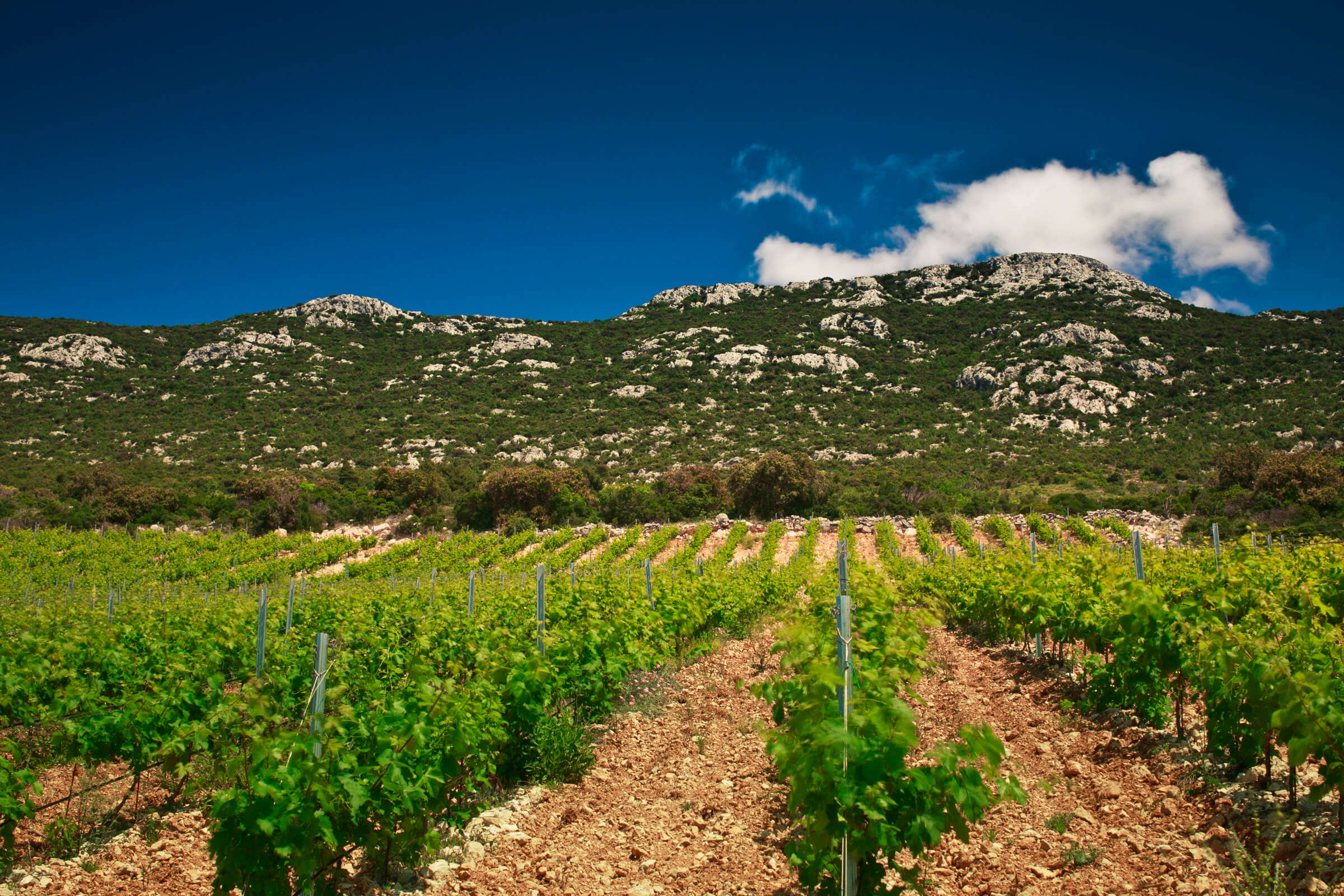
During the festival, the wineries participating in the project will offer their visitors discounts on wine (20% on certain wine palettes), and restaurants and taverns will have menus with traditional Peljesac specialties with a glass of local wine designed specifically for the festival (two menus, one of 120 kuna and one of 180 kuna). The festival will also include educational workshops, professional lectures, and various other events of interest to wine lovers.
‘‘We are glad that a large number of winemakers have joined the Pelješac Cellar Festival, which focuses on Plavac Mali, a trademark of our peninsula and one of the largest wine brands in Croatia. All research confirms that the eno-gastronomic offer is among the first three motives for tourists to come to our country, and our wine empire with famous vineyards such as Ponikava, Dingač, and Postup, has become a real tourist attraction and not only for wine lovers. As part of the Festival on June 4th and 5th, we are organizing the traditional Pelješac Cellars Open Days, an event that usually takes place in December. We hope that this June version will become another traditional wine festival’’, said Slobodan Rosić, secretary of the associations Pelješac Wine Routes and Plavac Mali Pelješac.
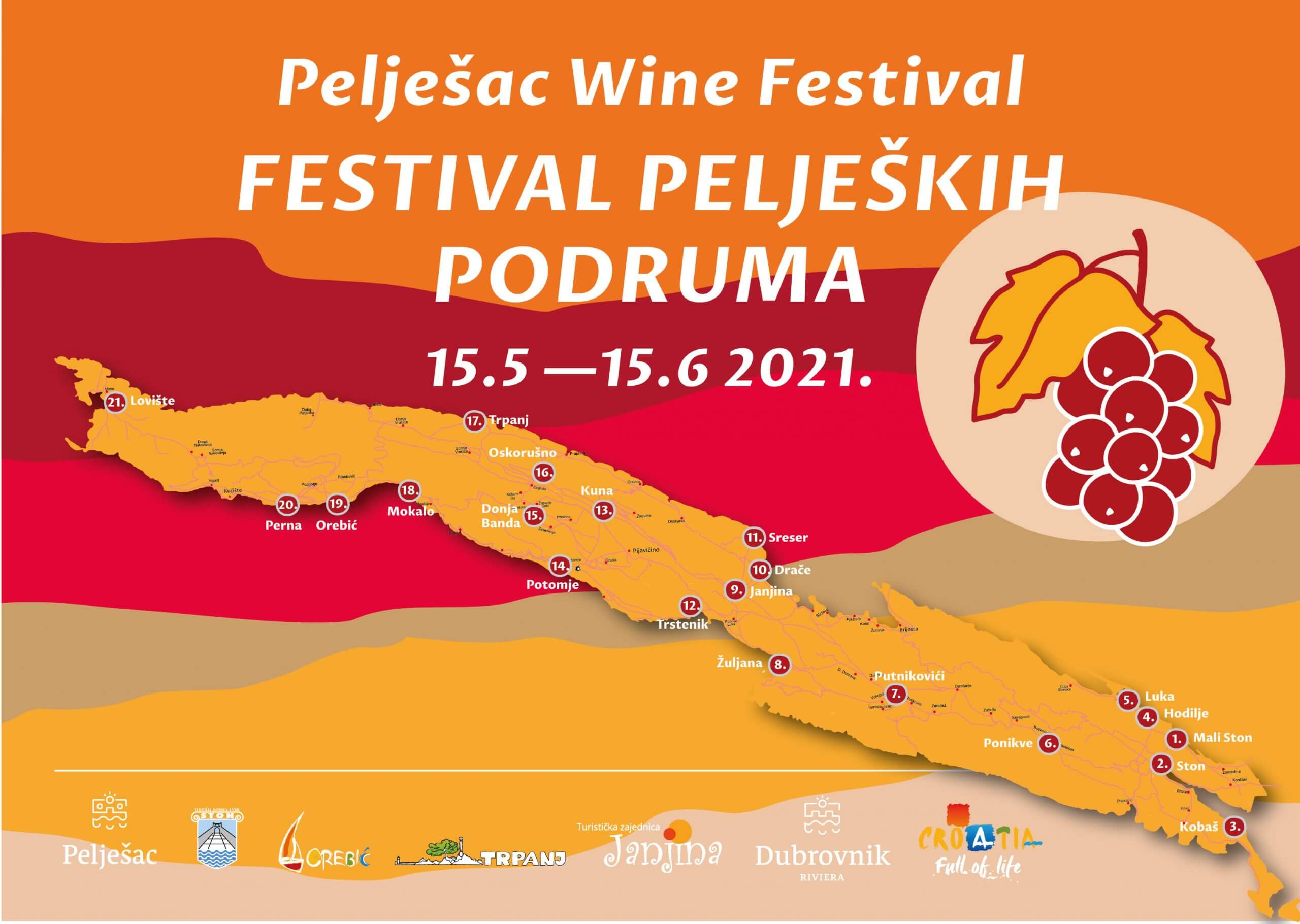
The director of the Ston Tourist Board, Fani Slade, pointed out that all four tourist boards from Pelješac are participating in this project in addition to Ston: the Tourist Boards of Janjina, Orebić, and Trpanj, and the idea was realized in cooperation with Feel IQM. He says that the Festival would not have been possible without the support of the associations Ston's Shellfish, Pelješac Wine Routes, and Plavac mali Pelješac, as well as the Ston Walls, Solana Ston, and the Maritime Museum in Orebić.
‘‘We have taken care of epidemiological measures, so there is no mass gathering during the event, and we plan to hold an accompanying program such as wine workshops and conferences online. We also recommend all visitors announce their arrival at the winery, family farm, restaurant, or tavern in advance. We believe that next year the pandemic will be behind us, so the second edition of the Pelješac Cellars Festival will offer a rich entertainment and educational program’’, says Slade.
Croatian wines and grapes are among the best in the world, and you can find more information about them in Total Croatia’s Guide to Croatian Wine HERE. You can also learn more about what the Pelješac peninsula can offer you on your next trip, in Total Croatia’s Pelješac peninsula on a page, HERE. Total Croatia’s articles are now available in your language!
For more on travel in Croatia, follow TCN's dedicated page.
Two Minor Earthquakes Hit Pelješac Peninsula
ZAGREB, 5 March, 2021 - The Croatian Seismological Service on Friday afternoon registered two minor earthquakes that struck the Pelješac peninsula in southern Dalmatia.
First, a magnitude 1.8 earthquake occurred at 12.38 p.m., and two minutes later, at 12.40 p.m., a stronger tremor, with a magnitude of 2.9, struck, the Seismological Service said.
Ponikve on Peljesac Becomes Protected Origin Designation of Croatian Wines
February 15, 2021 – Croatian wine gets another protection as Ponikve on Peljesac becomes a protected designation of origin for Croatian wines in the European Union.
As Dubrovnik-Neretva County reports, Ponikve, a wine-growing position on the Pelješac peninsula near the Municipality of Ston, has become a protected designation of origin for Croatian wines in the European Union.
On February 10, 2021, the European Commission published that "Ponikve" had entered the register of protected designations of origin and protected geographical origin (ZOI), becoming the 17th protected designation of origin for Croatian wines whose name is registered in the EU.
Along with Ponikve, protected designations of origin of Croatian wines in the EU are the Dalmatian hinterland, Dingač, Croatian Istria, Croatian Danube region, Croatian coast, Eastern Continental Croatia, Moslavina, Plešivica, Pokuplje, Prigorje-Bilogora, Coastal Croatia, Northern Dalmatia, Slavonia, Central and Southern Dalmatia, Zagorje-Međimurje, and Western Continental Croatia.

Ston / Photo: Romulić and Stojčić
The aim is to label the products, namely, wine, and highlight the name of the Ponikve locality following EU regulations, to easily identify the specifics of the vineyard locality.
The protected designation of origin covers the vineyard position of Ponikve located in the cadastral municipality of Boljenovići on the Pelješac peninsula near Ston, within the Pelješac vineyards in the Central and Southern Dalmatia subregion.
"Ponikve" stretches from the bay Prapratno in the southeast to the place Sparagovići in the northwest. On the north side is Ilija hill, and on the south is the state road Ston-Orebić. Ponikve is located in a hilly area with some smaller valleys and fields. The relief is typical karst.
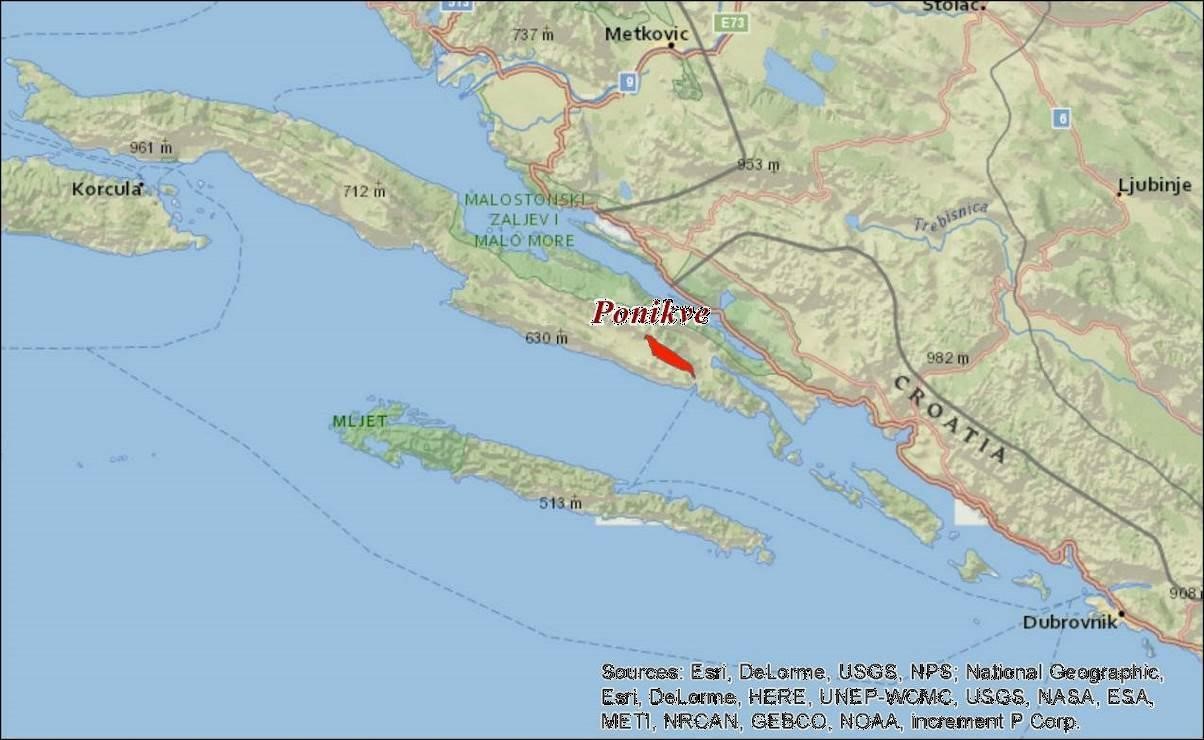
The ZOI "Ponikve" area is located on the Pelješac peninsula near the Municipality of Ston and is marked in red
The whole area is an outstanding example of the traditional way of raising vineyards with terraces and dry stone walls of attractive landscape architecture and view. The viticultural position of Ponikve is one of the most suitable terrains for growing vines on Pelješac, a peninsula well-known for its rich tradition of growing vines. Carefully selected places in Milo, Crnjava, at the foot of the hill Stari Grad, and all-day sunbathing give exceptional quality wine.
Apart from good wines, Ponikve is also known for excellent olive oil.
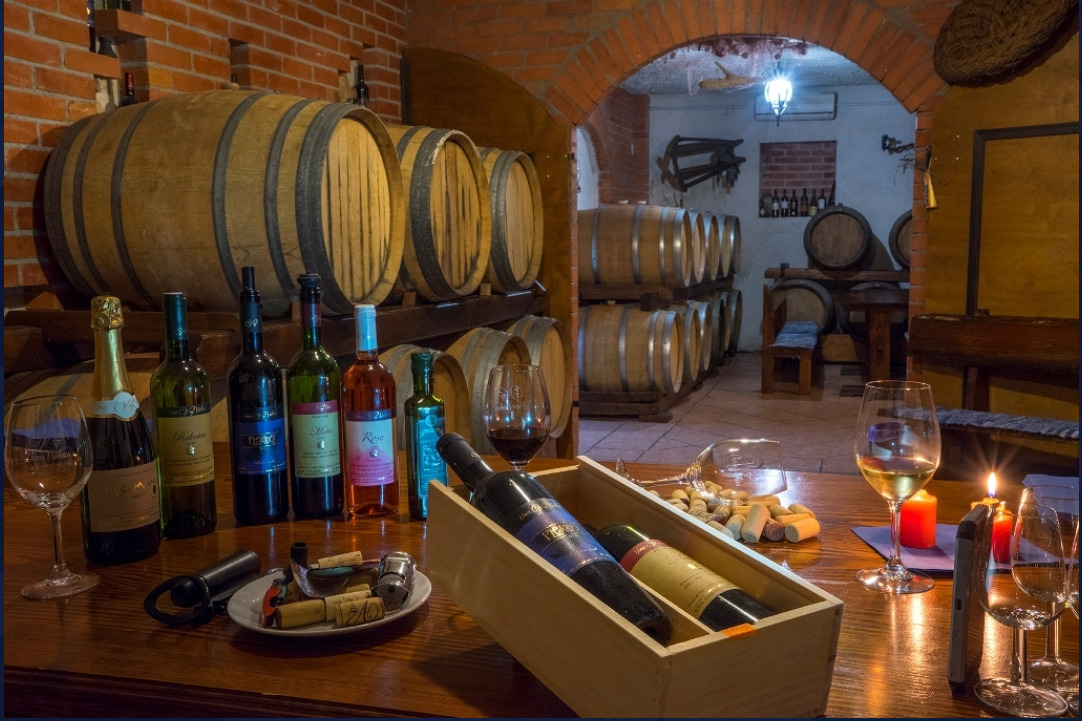
Ston.hr
Recognized black and white grape varieties are Plavac mali, Maraština, and white Pošip. The maximum yield per hectare is 11,000 kilograms or 6,600 liters of wine per hectare, according to the document "Product specification for the protected designation of origin Ponikve" by the Institute for Adriatic Crops and Karst Reclamation from Split.
The protection process for the locality Ponikve lasted for more than seven years, since 2013. The "Pelješac Wine Routes" Association was the project holder, while the development was entrusted to the mentioned institute. The Municipality of Ston, Dubrovnik-Neretva County, and the County Chamber of Commerce supported the Ponikve Site Protection Study production, reports Hina.
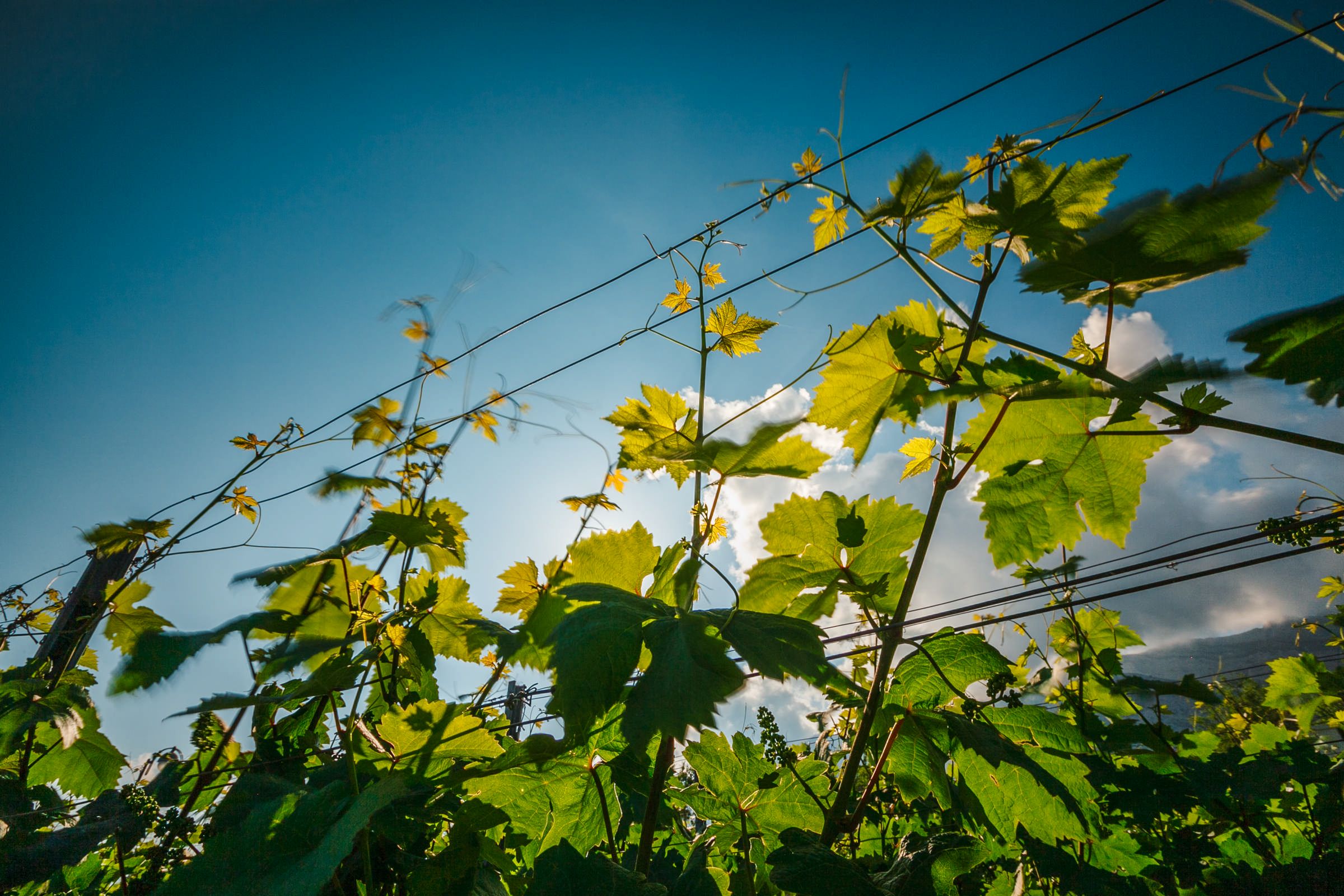
Photo: Romulić and Stojčić
To read more lifestyle news from Croatia, follow TCN's dedicated page.
Butkovic: Peljesac Bridge Expected to be Finished in November 2021
ZAGREB, Dec 23, 2020 - The bridge connecting the southern Peljesac peninsula to the mainland should be completed in November 2021, Minister of the Sea, Transport and Infrastructure Oleg Butkovic announced on Tuesday evening.
Despite the coronavirus outbreak, not all large infrastructure projects have been slowed down or paused. The construction of the Peljesac bridge, which includes the construction of 30 kilometres of access roads, is going very well. The bridge should be finished sometime in November 2021, Butkovic said in an interview with the HTV public television service.
Speaking of access roads, Butkovic said that a 2.5-km-long tunnel had been drilled last week, 74 days before schedule, adding that the whole project, including the access roads, should be completed before the 2022 tourist season.
Commenting on the impact of the coronavirus pandemic on the transport sector, Butkovic said that following the discovery of a new, more contagious strain of the coronavirus in the United Kingdom, the temporary suspension of flights to that country had been prolonged until December 31.
He said that 160 Croatian citizens would be flown to Croatia by Croatia Airlines on Wednesday. They would all have to present a negative PCR test, otherwise they would have to self-isolate and get tested.
Speaking of the national carrier Croatia Airlines, Butkovic said that the pandemic had had a disastrous impact on the aviation industry globally.
In the year to September, all Croatian airports recorded 19% of their results in 2019. Croatia Airlines reported year-on-year declines of 90% in April and May, of 80% in June and of 70% in July and August during the summer tourist season, he said.
The minister confirmed that the national carrier wasn't doing great regardless of the pandemic and the government had launched a search for a strategic partner, which has been suspended.
"Who will buy Croatia Airlines when everything has come to a standstill?" Butkovic said, adding that with the consent of the European Commission an arrangement had been made to help Croatia Airlines back on its feet. He expressed hope that the industry would recover over the next three years and announced that the search for a strategic partner would continue.
Butkovic also announced an additional HRK 400 million in aid to the transport sector to help it weather the crisis.
4000 Tons of Pelješac Bridge Leaves China on One Ship
September 15, 2020 – Construction of the Pelješac bridge continues despite the ongoing pandemic – a monster-sized shipment of bridge segments is currently on its way to Croatia
The Pacific Alert is 160 metres long and 27 metres wide. She set sail from Nantong, China on 10th September. Her cargo? 4000 tons of the Pelješac bridge.
We say 4000 tons, but, that's a slight exaggeration. The actual weight of the Pelješac bridge pieces she carries is more accurately 3,840 tons. The 13 pieces are heavy construction elements for the bridge and are expected to arrive in Croatian waters on 5th October.
This is the second such heavily loaded ship to set sail for Croatia carrying the Pelješac bridge parts, which have been constructed in China. The first ship with Peljesac bridge segments arrived in February this year, but production in China was thereafter halted due to coronavirus. The recent arrival of 100 Chinese welders who will connect the Peljesac bridge segments, and the resuming of production in China, indicate that the project is back on track despite the ongoing pandemic.
The Peljesac bridge will connect south Dalmatia to the rest of Croatia and will negate crossing the time-consuming Bosnian border to reach Dubrovnik. This will improve southern Croatia's accessibility to road users. The region of Dubrovnik and Neretva has in 2020 suffered worst from a fall in visitor numbers because it is mostly reliant on charter flights and large cruise ships. The activities of airlines and such ships has been curtailed by coronavirus.
The Pacific Alert is a general cargo ship that was built in 2010 and is sailing under the flag of Cyprus.
For the latest travel info, bookmark our main travel info article, which is updated daily.
Read the Croatian Travel Update in your language - now available in 24 languages
Croatia Wine: ”Every Visit Is A Voyage Of Discovery”
August 9, 2020 - Meet Marc Hough, a former international DJ who became a wine importer after visiting Dubrovnik and trying Croatia wine. In 2020, he returns for his 20th summer.
Situated in the north of England, about halfway up the island called Great Britain, the city of Manchester is famous for its football and music. Mancunians are proud of this. Two members of TCN are from the city, and when someone local asks “Odakle si?”, usually we say “Ja sam iz Manchestera” (I am from Manchester). We don't say "I'm from England" or "Great Britain". Everyone knows where Manchester is.
Marc Hough, a former international DJ. His passion for the Plavac he discovered in Dubrovnik turned him into a wine merchant.
20 years ago, Marc Hough was a high profile member of Manchester's famous music scene. He counts members of bands like The Stone Roses and The Happy Mondays as close personal friends. As longstanding DJ to New Order (the band that was once Joy Division), he toured the world playing the music of Manchester to many. But, no more.
“I reached the age of 40 in 2010 and thought, what am I doing with my life?” Hough told TCN over the phone, as he was preparing for a trip Dubrovnik. “DJing and the music business is a young man's game.”
And so, inspired by an enthusiasm for Croatia wine, he turned his back on a high profile DJ career and became a wine bar owner and wine merchant.
One of Marc's 'Cork Of The North' wine bars / stores near Manchester © Cork Of The North
“When I started, I was literally just selling wine out of the back of my car. I only had five customers and three of those were my dad, my brother and me!” remembers Marc, who has built his independent business considerably since then. He is now a wholesaler, recommending and selling wines to top bars and restaurants in the north of England. He has also opened two of his own wine bars 'Cork Of The North' (which are also wine shops), in Sale and Heaton Moor, near Manchester.
“Croatia plays such a big part in the story,” stresses Marc. “I've been visiting Dubrovnik for over 20 years. I had a friend from there who I met in Manchester. She came to live here for a while to escape the war. After it finished, she went home, invited me to Dubrovnik and I just fell in love with the place.”
“There was a wine bar in the Old Town called D'Vino, run by a half Croatian half Australian guy called Saša. After I saw what he was doing there with Croatia wine, I thought that's exactly the kind of place I'd like to have in Manchester.”
Already passionate about wine thanks to his grandad, that first trip to Dubrovnik made Marc curious to return. On his next visit to Croatia, he travelled further than just the Pearl of the Adriatic and went to the source of some Croatia wine itself.
Part of the Pelješac peninsula, which features heavily in Marc's 20-year affair with Croatia wine © Anto
“I came back on a sailing holiday with Bernard Sumner (guitarist of Joy Divison and singer of New Order),” Marc recalls. “He loves sailing and he has his own boat. We went all round Pelješac, Korčula, Brač. I fell in love with Dingač. Since then, I've travelled all of Dalmatia and through Istria learning about the wines. I've been to Bosnia to try their varieties like Vranac. But, for me, the most recent, amazing discovery has been Slavonia. They make some incredible white wines there; Graševina, Cabernet Franc, Traminac.”
New Order, the band that was once Joy Division. Marc Hough toured the world as their DJ © RL GNZLZ
“For me, it's always half holiday, half work,” Marc tells us, as he packs for his 20th annual trip to Dubrovnik, which begins on Sunday 11 August. “Amazing views, amazing people, amazing food and amazing wine. But, the wine always inspires thoughts of work. I can't help myself. I love visiting the vineyards, meeting the winemakers. It's not the same as when you do it in other countries. In Croatia, you'll often be invited into the kitchen or onto the terrace of the winemaker's home. You'll leave with arms full of different bottles - some gifted - and you can even be sold fine wine unceremoniously in a plastic bottle. I love that informal, homemade feel of the experience. It's charming and honest. When I go on buying trips in France, Spain and Italy, it's rarely like that.”
Dubrovnik's tourist season has this year stalled in response to COVID-19. Its visitors' reliance on charter air and cruise ships has proved inflexible. Yet, a little further up the coast, in Makarska and Omiš, the city centres are now full of families who drive to these places every year. Dubrovnik's offer is more once-in-a-lifetime, less loyalty. Unless, of course, it's the wines and not the walls that call you to Dubrovnik.
“It's inevitable that I'll find something new that I want to bring back with me,” Marc says of his impending trip. “Every visit is a voyage of discovery. This time, although I'll again be based around Dubrovnik, I'm determined to go to Slavonia to look at some Graševina and Cabernet Franc, which thrives in the terroir there.”
Marc Hough with just one of his famous friends from the Manchester music scene. Bez, of the band Happy Mondays, is now a customer at Cork Of The North © Cork Of The North
“I wanted to start importing Croatia wines years ago but, for someone at my level, it was so difficult before Croatia became a full member of the EU. Tariffs were payable on the borders and if you wanted to move wines from south Dalmatia - Dubrovnik and the islands - you'd have to go through the border with Bosnia. I lost several whole shipments to the Bosnian police, who said my paperwork was incorrect (it wasn't). It's much better these days. But, there's still very little Croatian wine in the UK, even though the interest in Croatia wine is massive. There's a big demand from people who are really passionate about wine, but also people who come back from holiday, have enjoyed Croatian wine, go searching for it, and just can't find it.”
Cork Of The North varies its selection of fine wines throughout the year. At the moment, Marc stocks Kozlović Teran and Kozlović Malvasia from Istria and Septem Pontes Plavac Mali from Pelješac.
“For an independent like me, I buy an export pallet for each wine I want to bring back. That's 600 bottles of each wine.,” he says, “and as my own personal passion right now is for Graševina, I expect at least one of those to be filled with Slavonian wine on this trip.”
Marc Hough on one of his Croatia wine buying excursions


